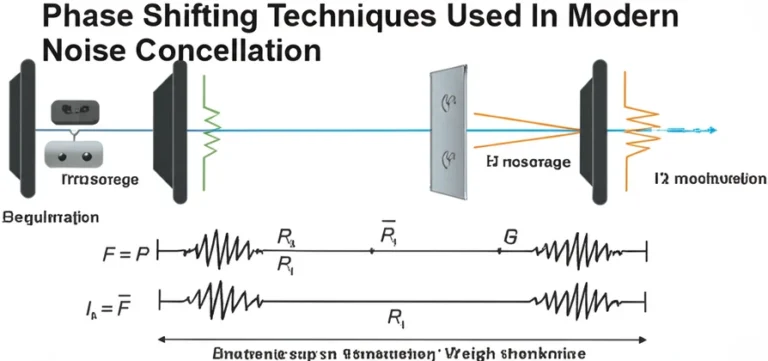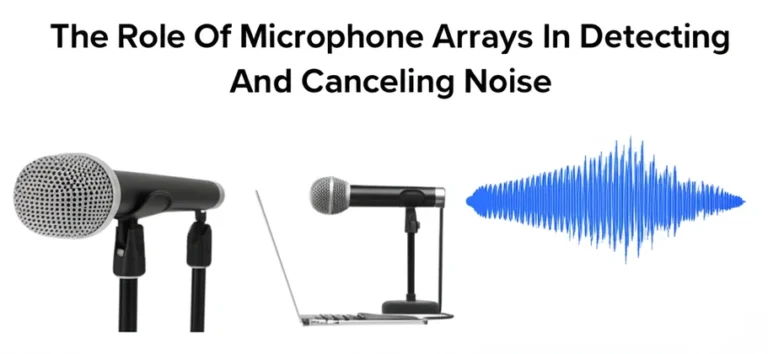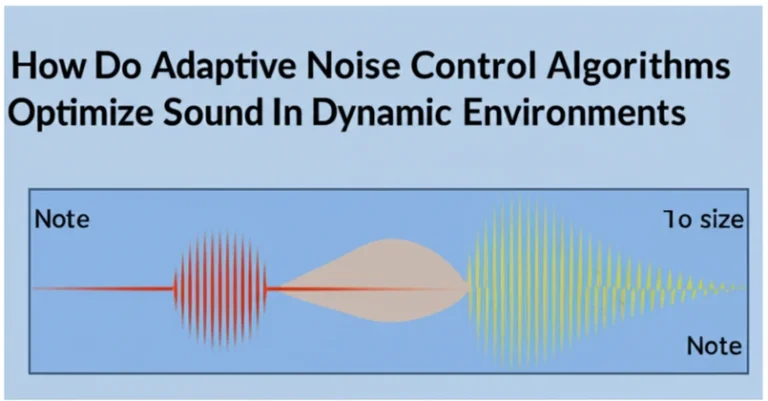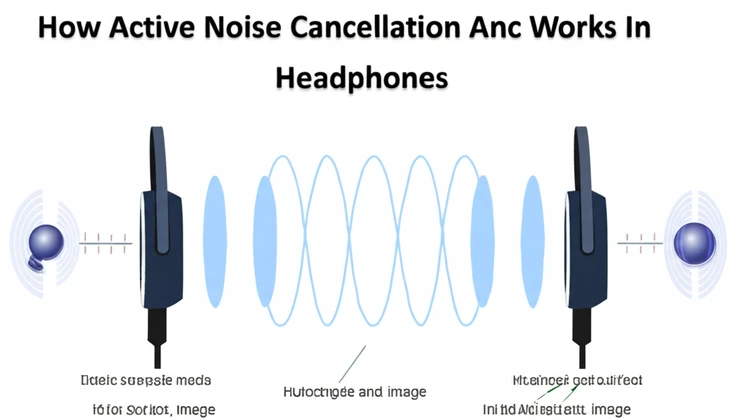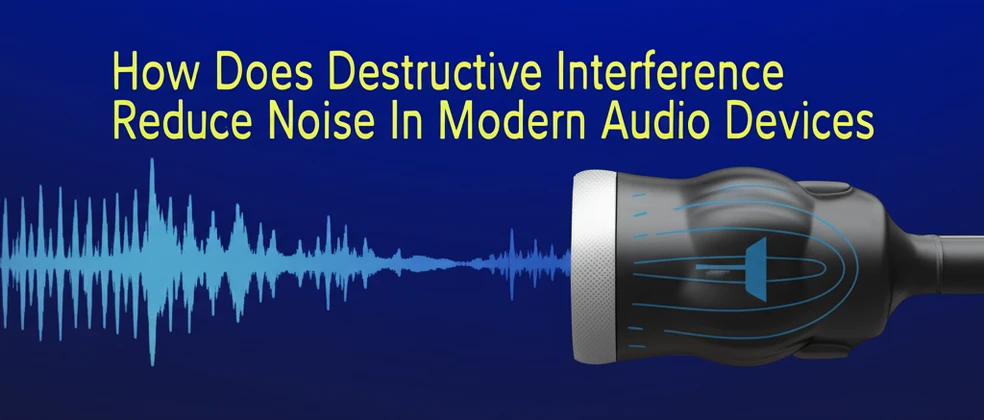
In today’s bustling world, noise pollution is a pervasive issue, impacting our concentration, productivity, and overall well-being. From the roar of traffic to the hum of appliances, unwanted sounds constantly bombard us. Fortunately, advancements in audio technology offer a powerful solution: active noise cancellation, which leverages the principle of destructive interference to create oases of quiet.
This article delves into how destructive interference reduces noise in modern audio devices, exploring the science behind it, its diverse applications, and the exciting innovations shaping the future of sound control.
How Does Destructive Interference Work?
Destructive interference occurs when two sound waves of the same frequency and amplitude meet while being 180 degrees out of phase. Imagine a sound wave as a series of peaks (compressions) and troughs (rarefactions). When the peak of one wave aligns perfectly with the trough of another, they cancel each other out, effectively neutralizing the sound.
This phenomenon is the foundation of how does destructive interference reduce noise in modern audio devices.
To achieve this cancellation in practice, noise-canceling devices employ a sophisticated process:
- Sound Wave Detection: Highly sensitive microphones capture the incoming ambient noise.
- Phase Inversion: A specialized electronic circuit analyzes the captured noise and generates an “anti-noise” wave – a mirror image of the original sound wave, shifted by 180 degrees in phase inversion.
- Wave Overlap: The original noise wave and the anti-noise wave are superimposed. When they meet, the peaks and troughs align, resulting in destructive interference and a significant reduction in the perceived sound.
It’s important to note that achieving perfect noise cancellation is challenging due to the complexity of real-world sound. Factors like varying frequencies, unpredictable sound patterns, and the directionality of sound sources make complete elimination difficult.
However, modern noise-canceling technology can significantly attenuate unwanted sounds, especially consistent low-frequency noises.
Examples of Destructive Interference in Noise-Canceling Devices
The application of destructive interference is revolutionizing a wide range of audio devices and environments:
Noise-Canceling Headphones
Leading headphone manufacturers utilize destructive interference to create immersive listening experiences. Miniature microphones within the earcups capture external sounds, which are then processed to generate the corresponding anti-noise. This allows users to enjoy music or podcasts with minimal distraction from background noise like airplane engines or bustling city streets.
Noise-Canceling Microphones
Microphones incorporating noise-canceling technology employ destructive interference to isolate the speaker’s voice while suppressing background noise.
This is particularly beneficial in noisy environments or during video conferencing, ensuring clear communication.
Environmental Noise Barriers
On a larger scale, destructive interference is being employed to mitigate noise pollution in public spaces. Systems placed near highways or construction sites emit carefully engineered sound waves to counteract the noise generated by traffic or machinery, creating quieter environments for nearby residents.
Automotive Applications
Modern vehicles are increasingly integrating active noise control systems to enhance passenger comfort. These systems utilize destructive interference to reduce engine and road noise, creating a more serene in-cabin experience.
Smart Home Devices
Smart speakers and home assistants leverage destructive interference to improve voice recognition accuracy.
By minimizing background noise, these devices can more effectively isolate and interpret voice commands.
Benefits of Using Destructive Interference
The widespread adoption of destructive interference-based noise cancellation stems from its numerous advantages:
Enhanced Audio Quality
By reducing unwanted noise, destructive interference allows listeners to appreciate the nuances and subtleties of audio content, whether it’s music, podcasts, or audiobooks.
Increased Productivity
In workplaces and study environments, noise-canceling systems can significantly improve focus and concentration by creating quieter, less distracting atmospheres.
Better Health and Comfort
Reducing exposure to noise pollution contributes to improved health and well-being. Studies have shown that prolonged exposure to loud noises can lead to stress, sleep disturbances, and even hearing damage. Noise-canceling technology can help mitigate these risks.
Innovations in Destructive Interference Technology
The field of noise cancellation is constantly evolving, with ongoing research and development leading to more sophisticated and effective solutions:
Adaptive Noise Cancellation
Adaptive noise cancellation (ANC) systems continuously analyze and adapt to changing noise environments.
They can dynamically adjust the anti-noise signal to effectively counter varying frequencies and amplitudes of background noise.
Hybrid ANC
Hybrid ANC combines feedforward and feedback mechanisms to enhance noise cancellation performance across a broader frequency range. This approach addresses the limitations of traditional ANC systems, providing more comprehensive noise reduction.
AI Integration
Artificial intelligence is being incorporated into noise-canceling devices to create smarter, more personalized sound control. AI algorithms can learn and adapt to specific noise patterns, optimizing the cancellation process for individual users and environments.
FAQ
What is destructive interference?
Destructive interference occurs when two sound waves of the same frequency and opposite phases meet, resulting in a reduction or cancellation of the combined sound.
This principle is harnessed by noise-canceling technology to reduce unwanted sounds.
Can destructive interference completely eliminate noise?
While destructive interference can significantly reduce unwanted noise, complete elimination is difficult to achieve in real-world situations. Variations in frequency, unpredictable sound patterns, and the directionality of sound sources make it challenging to perfectly cancel out all noise.
What types of devices use destructive interference?
Destructive interference is used in a wide array of devices, including noise-canceling headphones, microphones, smart speakers, automotive noise control systems, and environmental noise barriers.
Is destructive interference safe for prolonged use?
Yes, destructive interference-based noise cancellation is safe for extended use. By reducing overall noise exposure, it can even protect hearing health by minimizing the need to increase volume in noisy environments.
What are the limitations of noise cancellation technology?
Current noise cancellation technology is most effective at reducing low-frequency, consistent noises. Higher frequency and inconsistent noises are more challenging to cancel completely. Also, the effectiveness of noise cancellation can be impacted by factors like the fit of headphones or the placement of microphones.
Conclusion
Destructive interference is a remarkable tool for mitigating the pervasive problem of noise pollution. From enhancing audio experiences with noise-canceling headphones to creating quieter environments with innovative noise control systems, its applications continue to expand.
As technology advances, we can anticipate even more sophisticated and effective noise-canceling solutions that will further improve our quality of life and auditory well-being.

